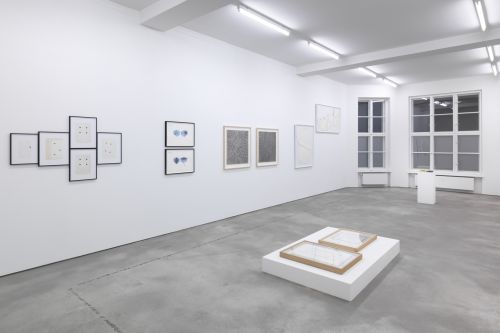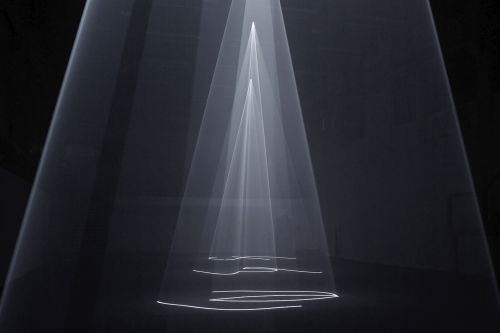Anthony McCall (*1946, St. Paul’s Cray) lives in New York City. Solo exhibitions include MAAT, Lisbon (2024-25), Tate Modern, London (2024–25), Guggenheim, Bilbao (2024), Buffalo AKG Art Museum, New York (2019), Pioneer Works, Brooklyn and The Hepworth Wakefield (both 2018), Nevada Museum of Art, Reno (2016), LAC Museo Cantonale d’Arte, Lugano (2015), Eye Filmmuseum, Amsterdam (2014), Deichtorhallen Hamburg; Les Abattoirs, Toulouse; Kunstmuseum St. Gallen and Contemporary Art Museum, St. Louis, MO (all 2013), Project Room, New York; Tate Modern, London and Hamburger Bahnhof, Berlin (all 2012), MMK Museum für Moderne Kunst, Frankfurt (2011) and Serpentine Gallery, London (2007). Group exhibitions include Light Art Museum, Budapest (2025-26), Queensland Art Gallery of Modern Art, Brisbane; Whitney Museum of American Art, New York and Neon Foundation, Athens (all 2016), Mori Art Museum, Tokyo and Museum of Contemporary Art, Sydney (both 2015), Centre Pompidou-Metz, Metz (2014), Hayward Gallery, London (2013), The Geffen Contemporary at MOCA, Los Angeles (2012); Museum of Modern Art, New York (2011), Whitechapel Gallery, London (2009) and Whitney Museum of American Art, New York, (2001).
| Auckland Art Gallery |
| Baltimore Museum of Art |
| Collection Lambert, Avignon |
| Fonds National d’Art Contemporain, Paris |
| FRAC, Bretagne |
| FRAC, Ile-de-France |
| FRAC, Picardie |
| Freunde der Deutschen Kinemathek e.V. / Arsenal Experimental, Berlin |
| Gallery of New South Wales, Sydney |
| Hall Art Foundation, Vermont |
| Julia Stoschek Collection, Düsseldorf |
| Les Abattoirs – Musée FRAC Occitanie Toulouse |
| Hirshhorn Museum, Washington D.C. |
| Margulies Collection, Miami |
| Milwaukee Art Museum |
| Moderna Museet, Stockholm |
| Musée d’Art Contemporain Rochechouart |
| Musée National d’Art Moderne, Centre Georges Pompidou, Paris |
| Museu d’Art Contemporani de Barcelona |
| Museum für Moderne Kunst, Frankfurt |
| Museum of Modern Art, New York |
| Nationalgalerie im Hamburger Bahnhof, Museum für Gegenwart, Berlin |
| Queensland Art Gallery and Gallery of Modern Art, Brisbane |
| Sammlung Falckenberg, Hamburg |
| Sammlung Goetz, Munich |
| Sammlung Verbund, Vienna |
| San Francisco Museum of Modern Art |
| Tate, London |
| Thyssen-Bornemisza Art Contemporary, Vienna |
| Whitney Museum of American Art, New York |



































